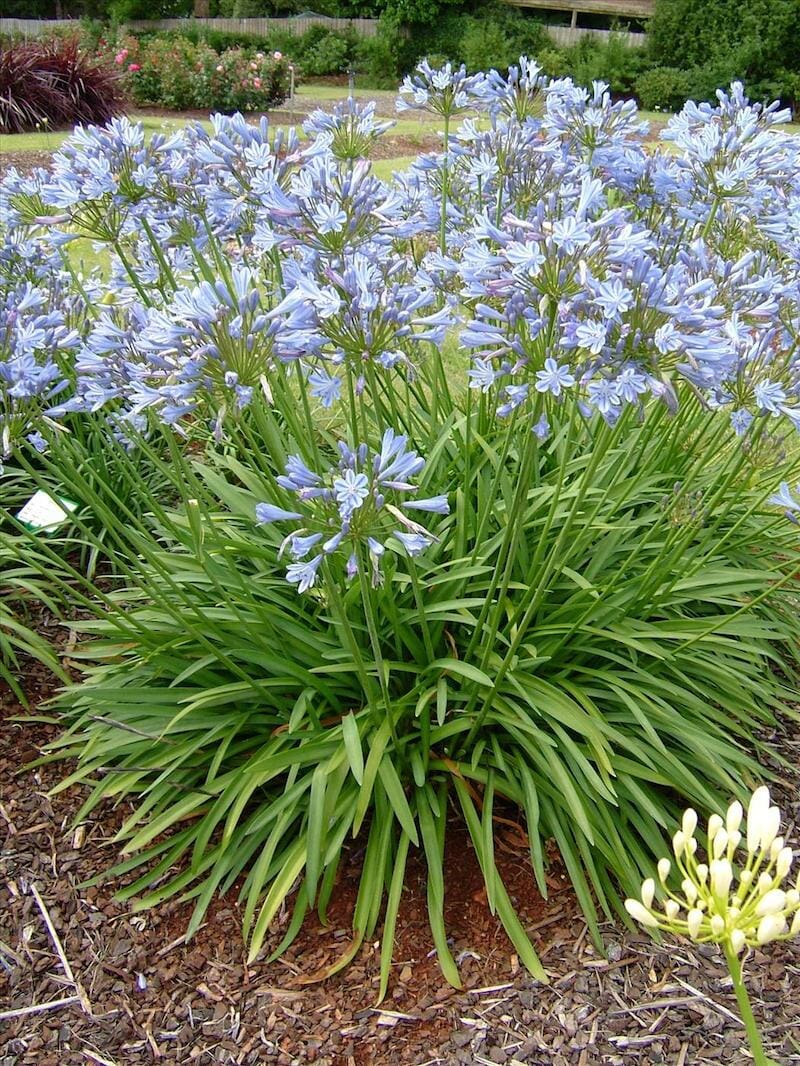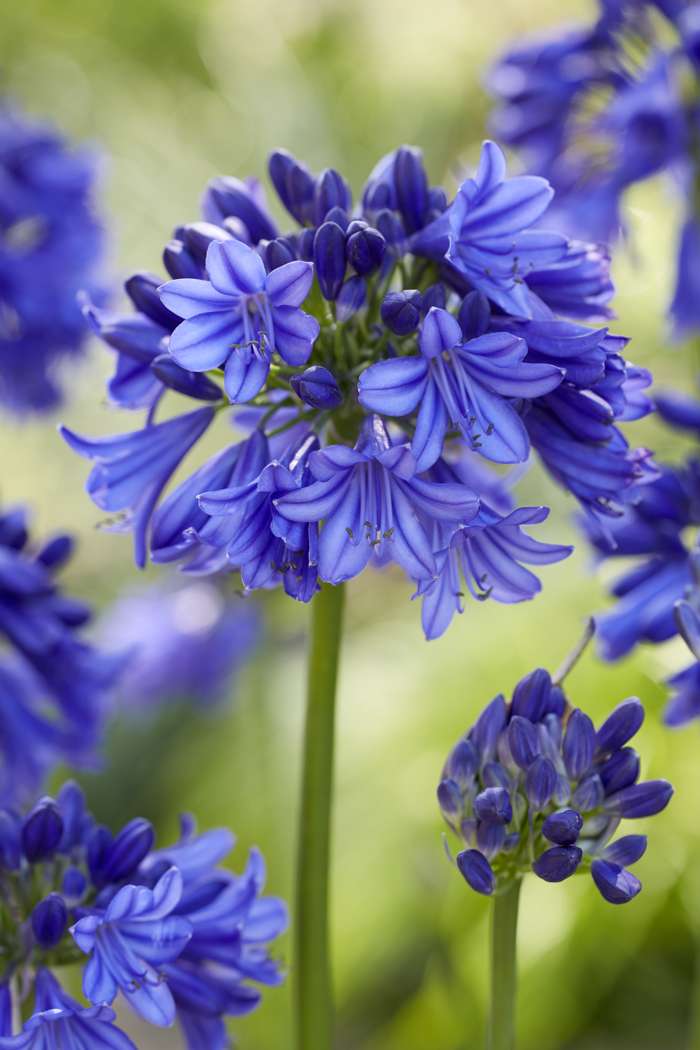How to Plant and Maintain Agapanthus in Your Yard
How to Plant and Maintain Agapanthus in Your Yard
Blog Article
Unleashing the Secret to Effective Agapanthus Cultivation: Idea for a Flourishing Yard
In the world of horticulture, growing agapanthus efficiently requires a calculated approach that includes different facets of plant treatment. By understanding the nuances of agapanthus cultivation, one can create an environment where these plants thrive and bloom generously.
Growing Agapanthus: Best Practices
When growing Agapanthus, correct soil preparation is crucial for making certain successful growth and growth of these lovely blossoms. Agapanthus, typically referred to as Lily of the Nile or African lily, grows in well-draining dirt with a somewhat acidic to neutral pH level - Agapanthus. Before planting, it is crucial to modify hefty clay dirts with natural matter such as garden compost or peat moss to boost drain and supply important nutrients for the plants
To grow Agapanthus, choose an area that gets complete sunlight to partial color, as this will advertise healthy and balanced growth and bountiful blooming. Dig a hole two times the size of the plant's origin ball and position the Agapanthus at the exact same depth it was previously expanding. Gently backfill the opening with soil, weighing down securely to remove any type of air pockets around the origins.
Water the newly grown Agapanthus thoroughly and proceed to maintain the soil evenly wet, specifically throughout the plant's energetic growing period. Agapanthus. Applying a well balanced plant food once a month can even more sustain the plant's growth and flowering. By adhering to these finest techniques for planting Agapanthus, you can produce a spectacular screen of these fascinating blossoms in your yard
Perfect Soil Issues for Agapanthus
For ideal growth and blooming success of Agapanthus plants, guaranteeing the dirt problems are excellent is important. Agapanthus flourishes in well-draining dirt with a slightly acidic to neutral pH degree varying from 6.0 to 7.0. This sort of soil permits for adequate water drainage, preventing waterlogging which can cause root rot. To improve soil drain, take into consideration adding raw material such as compost or peat moss when preparing the planting website. Additionally, Agapanthus favors dirt that is rich in nutrients, so including a well balanced plant food throughout the growing period can advertise healthy and balanced development and vibrant blooms.

Watering and Feeding Tips
To make certain healthy growth and dynamic flowers, proper watering and fertilizing methods are necessary for successful Agapanthus farming. Agapanthus plants profit from normal watering, particularly during the expanding season. It is advised to water deeply when a week, making sure the dirt is damp but not saturated. Throughout warm weather condition or in pots, even more constant watering may be necessary to stop the soil read what he said from drying look at this web-site completely.
When it concerns fertilizing Agapanthus, a well balanced fertilizer with equivalent parts nitrogen, phosphorus, and potassium can be applied in the springtime to advertise healthy development and flowering. Slow-release plant foods are excellent for supplying nutrients slowly over an extended period. Avoid over-fertilizing, as this can result in extreme foliage development at the expense of flowers.
Furthermore, including organic matter like compost right into the soil can boost nutrient degrees and enhance soil structure, assisting in the total health of the Agapanthus plants. By following these watering and fertilizing tips, gardeners can ensure their Agapanthus plants flourish and produce sensational display screens of blossoms.
Pruning and Deadheading Methods
Correct pruning and deadheading strategies play an essential function in preserving the wellness and looks of Agapanthus plants, matching the vital methods of watering and fertilizing for effective growing. Trimming Agapanthus includes more information eliminating spent blossom heads, dead or yellowing fallen leaves, and overall shaping of the plant to advertise much better development. Deadheading, the process of eliminating discolored blossoms, not only improves the plant's look however additionally encourages further growing.
When deadheading Agapanthus, it is a good idea to clip off the flower stem at the base using sharp, clean shears. This process reroutes the plant's energy from seed manufacturing back right into origin and foliage growth, promoting a healthier and much more durable plant. Regular deadheading can prolong the growing period of Agapanthus and prevent self-seeding, which can bring about overcrowding.
In terms of pruning, Agapanthus generally take advantage of a light trim after flowering to tidy up the plant and urge fresh development. Cutting down the invested flower stems and eliminating any damaged or dead vegetation aids keep the plant's vitality and total appearance. Nevertheless, it is important to stay clear of cutting into the crown of the plant, as this can deteriorate its wellness.

Protecting Agapanthus From Pests and Diseases
Executing effective parasite and disease monitoring strategies is important to protecting the health and wellness and vitality of Agapanthus plants in farming. One typical insect that influences Agapanthus is the Agapanthus borer, a caterpillar that passages right into the plant, creating damages to the leaves and blossoms.
In addition to insects, Agapanthus are prone to conditions such as root rot and fungal leaf spots. By remaining attentive and dealing with bug and disease problems quickly, gardeners can help their Agapanthus prosper and thrive.

Verdict
Finally, successful cultivation of agapanthus calls for proper growing strategies, perfect soil conditions, adequate watering and fertilizing, routine trimming and deadheading, and security from parasites and illness. By following these pointers and tricks, garden enthusiasts can make sure a flourishing yard loaded with gorgeous agapanthus blooms. Agapanthus. Keep in mind to keep regular treatment and interest to detail to advertise the health and long life of these spectacular plants
When growing Agapanthus, appropriate dirt preparation is important for making sure successful growth and growth of these stunning blossoms.Water the recently grown Agapanthus thoroughly and proceed to keep the dirt equally wet, particularly throughout the plant's energetic expanding period.For ideal growth and flowering success of Agapanthus plants, ensuring the dirt problems are optimal is important. When planting or hair transplanting Agapanthus, make certain the soil is well-prepared to supply the required structure for the plants to establish themselves successfully. One usual bug that influences Agapanthus is the Agapanthus borer, a caterpillar that passages right into the plant, creating damages to the fallen leaves and flowers.
Report this page